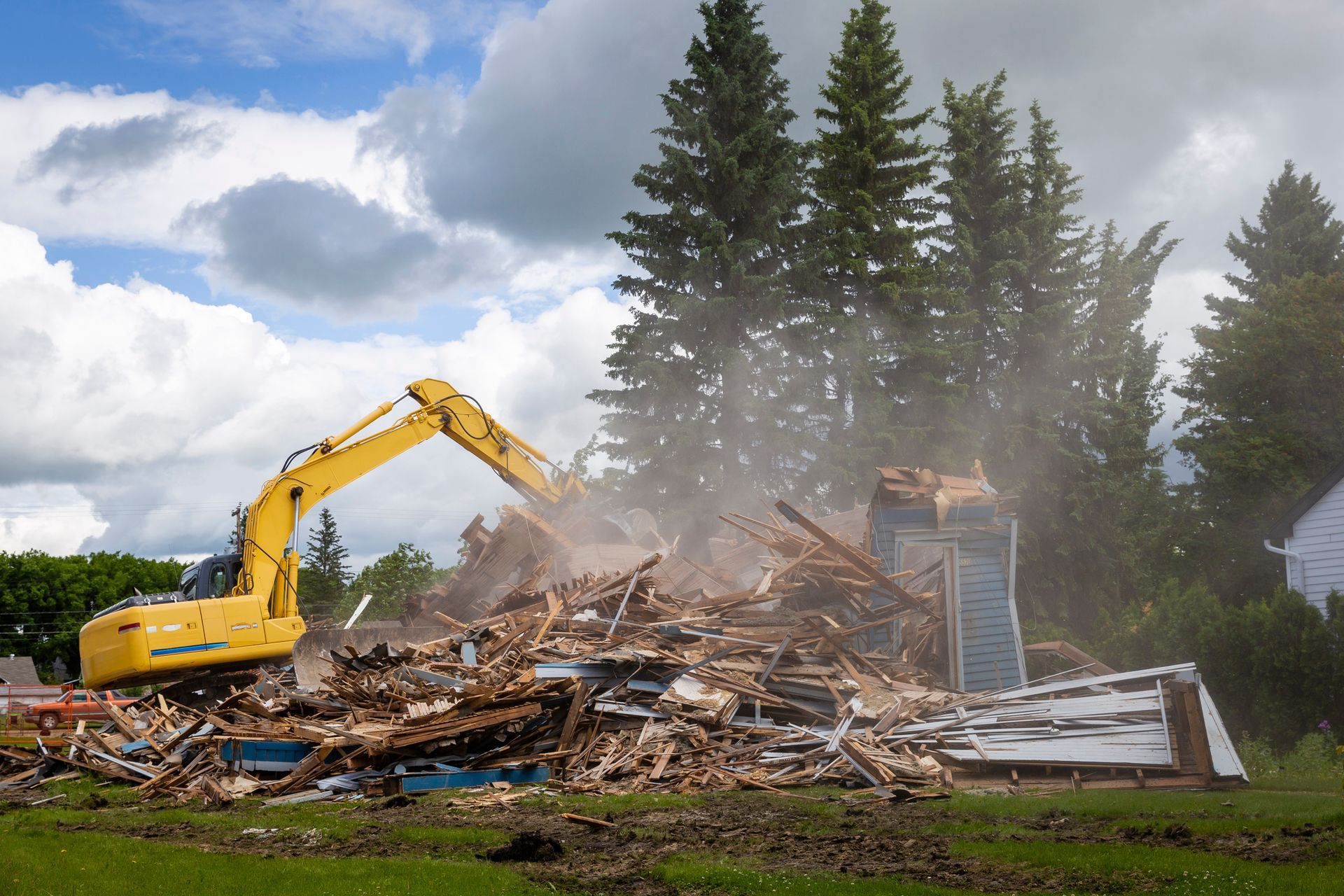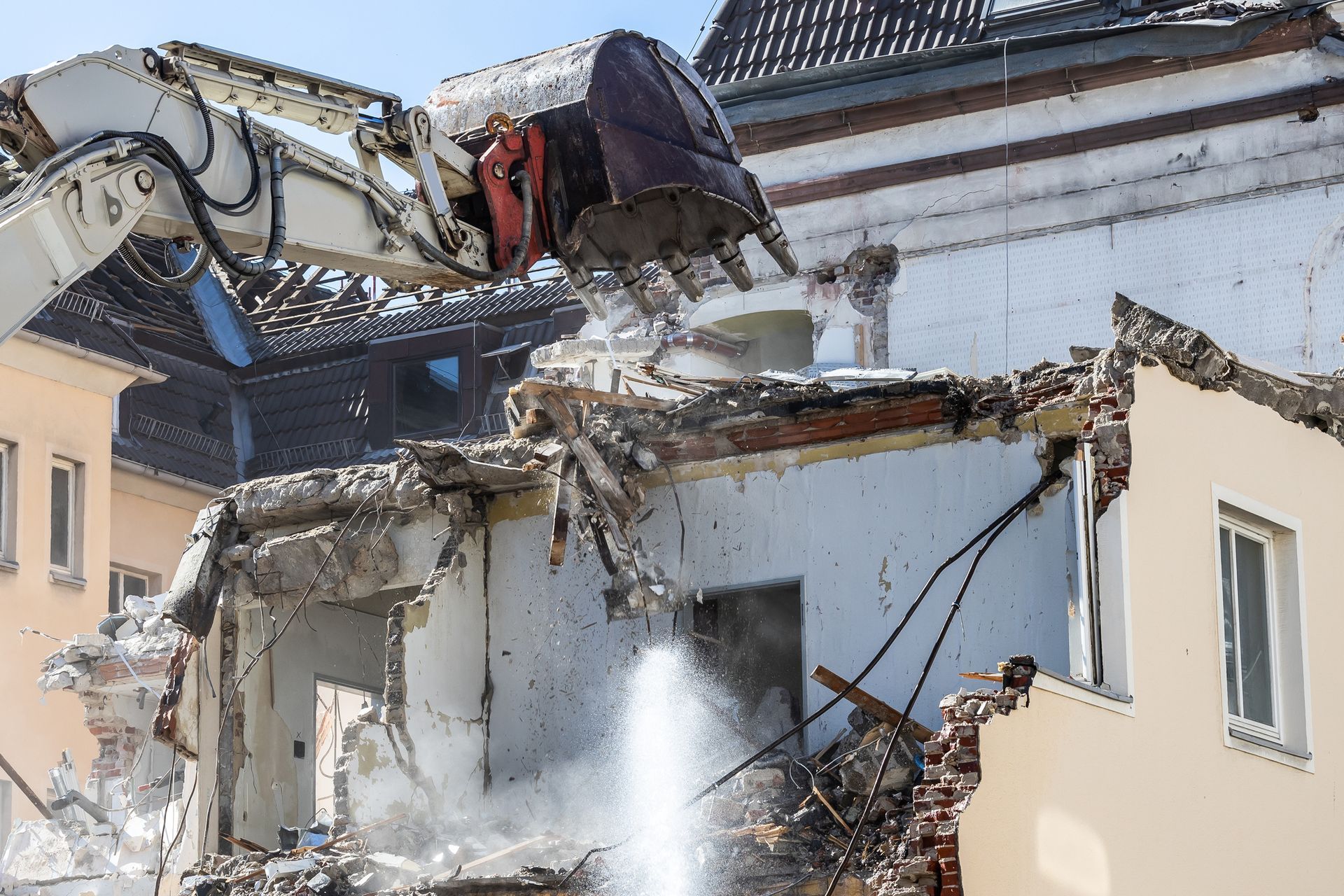What to Expect From Your Demolition Contractor
When managing an industrial demolition project, partnering with the right demolition contractor can make all the difference in achieving a safe, efficient, and successful outcome. Industrial facility managers and construction project leaders are often tasked with overseeing massive, complex demolitions. Understanding what to expect from your demolition contractor allows you to plan accordingly, avoid costly delays, and ensure compliance with strict safety and environmental regulations. Whether you are planning a partial deconstruction or a full-scale industrial demolition, this guide will provide you with a step-by-step overview of the process, common challenges your contractor will overcome, and the waste management practices typically employed.
A Step-by-Step Overview of the Industrial Demolition Process
Industrial demolition involves more than just bringing down buildings. It’s a meticulous process that requires detailed planning, skilled execution, and expert knowledge of industrial-scale structures. Here’s what you can expect:
1. Initial Site Assessment and Project Planning
Your demolition contractor will start by conducting an extensive site assessment. This includes evaluating the size and complexity of the industrial site, the materials used in the structures (such as reinforced concrete and steel), and identifying any hazardous materials like asbestos, lead paint, or chemical residues. This assessment is critical because industrial sites often have components that require specialized removal techniques.
During this phase, permits are secured, local regulations are reviewed, and a demolition plan is crafted in collaboration with you, outlining timelines, safety measures, and environmental safeguards. Experienced demolition contractors incorporate their knowledge into this plan to ensure efficient use of resources and equipment.
2. Safety Protocols and Site Preparation
Safety is paramount in industrial demolition projects. Your demolition contractor will establish perimeter controls, erect barriers, and implement exclusion zones to protect workers and the surrounding community. Before any structural work begins, utilities such as electricity, gas, and water must be carefully disconnected to prevent accidents.
Contractors will also develop emergency response and communication plans, reinforcing the safety-first mindset throughout the site’s activities. This preparation phase seeks to mitigate risks associated with heavy machinery, falling debris, and hazardous substances typical in industrial environments.
3. Demolition Execution: Structural Dismantling and Debris Removal
The actual demolition process can vary greatly depending on the industrial facility’s design and your project goals. Whether it requires partial dismantling to preserve parts of the structure or complete teardown, your contractor uses specialized techniques and equipment for industrial demolition.
Common methods include mechanical demolition using excavators fitted with hydraulic breakers, shears, or grapples. Sometimes, controlled implosions are employed, but only under strict safety guidelines. The choice of demolition method is influenced by factors such as site location, noise constraints, and environmental considerations.
Managing the debris as demolition progresses is another critical task. The debris doesn’t just get tossed aside, it’s systematically processed to separate materials for recycling or safe disposal, which helps reduce the environmental footprint of your project.
4. Waste Sorting, Recycling, and Disposal
Industrial demolition generates large volumes of material, but much of it can be recycled or repurposed. Your demolition contractor should have in-depth knowledge of modern waste management practices that prioritize sustainability.
Materials like steel and other metals are sorted and sent to recycling facilities, concrete is crushed for use as aggregate in new construction, and wood can be reused or turned into biomass fuel. Hazardous wastes, such as asbestos, require certified removal processes and proper disposal at licensed facilities.
This waste management strategy minimizes landfill use, reduces disposal costs, and aligns your demolition project with environmental standards.
5. Site Clean-Up and Final Grading
Once demolition is complete and waste has been managed, your demolition contractor will clear the site of debris and conduct grading to prepare for future construction. This step ensures the industrial site is safe, level, and ready for redevelopment or reuse.
After final inspections and obtaining necessary clearance certificates, control of the site can be handed over for your next project phase.
Common Challenges in Industrial Demolition and How Contractors Overcome Them
Industrial demolition is complex and fraught with challenges that require expert problem-solving:
- Hazardous materials and environmental risk: Old industrial buildings may contain dangerous substances. Your demolition contractor coordinates detailed pre-demolition testing and employs licensed specialists for removal, adhering strictly to environmental regulations.
- Complex and robust structures: Industrial buildings often have heavily reinforced materials that are difficult to dismantle. Specialized attachments for earthmoving equipment and precise techniques enable contractors to handle these tough materials without damaging adjacent structures or causing site disturbances.
- Strict regulatory compliance: From noise and dust control to air and water quality management, demolition projects must adhere to extensive local and national regulations. Skilled contractors implement dust suppression systems, proper runoff control, and noise abatement measures to stay in compliance.
- Logistical coordination: Industrial sites can present space constraints and limited access points. Contractors strategically plan equipment use and site traffic to minimize disruption and ensure smooth operations.
By understanding these challenges and how your demolition contractor addresses them, you can maintain confidence in the project’s successful delivery.

Waste Management and Recycling Practices in Industrial Demolition
Sustainability is increasingly important in industrial demolition. A professional demolition contractor focuses on:
- On-site sorting and segregation: Debris is separated into metals, concrete, wood, and hazardous waste streams immediately after demolition to simplify recycling and disposal efforts.
- Maximizing material recovery: Contractors employ crushing, baling, and transport techniques that enable high rates of recovery and reuse, promoting circular economy goals.
- Proper disposal of hazardous waste: Specialized protocols ensure asbestos and chemical contaminants are handled safely, protecting workers and the environment.
These practices not only reduce environmental impact but may also deliver cost efficiencies by generating recyclable materials that can be sold or reused in construction.
Partner With Morello Earthmoving for Industrial Demolition in Sunraysia
When it comes to industrial demolition in the Sunraysia region, Morello Earthmoving is your trusted demolition contractor. Our experienced team understands the complexities of industrial structures and brings comprehensive expertise to every project. We combine cutting-edge machinery, such as that detailed on our demolition and earthmoving page, with rigorous safety and environmental standards.
Our commitment to sustainability is evidenced by efficient waste management and recycling practices, which you can explore visually in our gallery. At Morello Earthmoving, we take pride in delivering industrial demolition projects on time, on budget, and with minimal environmental impact.
Ready to Take the Next Step?
If you’re an industrial facility manager or construction leader looking for reliable and professional demolition contractor services in Sunraysia, contact Morello Earthmoving today. Let us help you navigate the complexities of industrial demolition with confidence and expertise. Reach out now to discuss your upcoming project and receive a tailored demolition plan that meets your operational and environmental goals.




